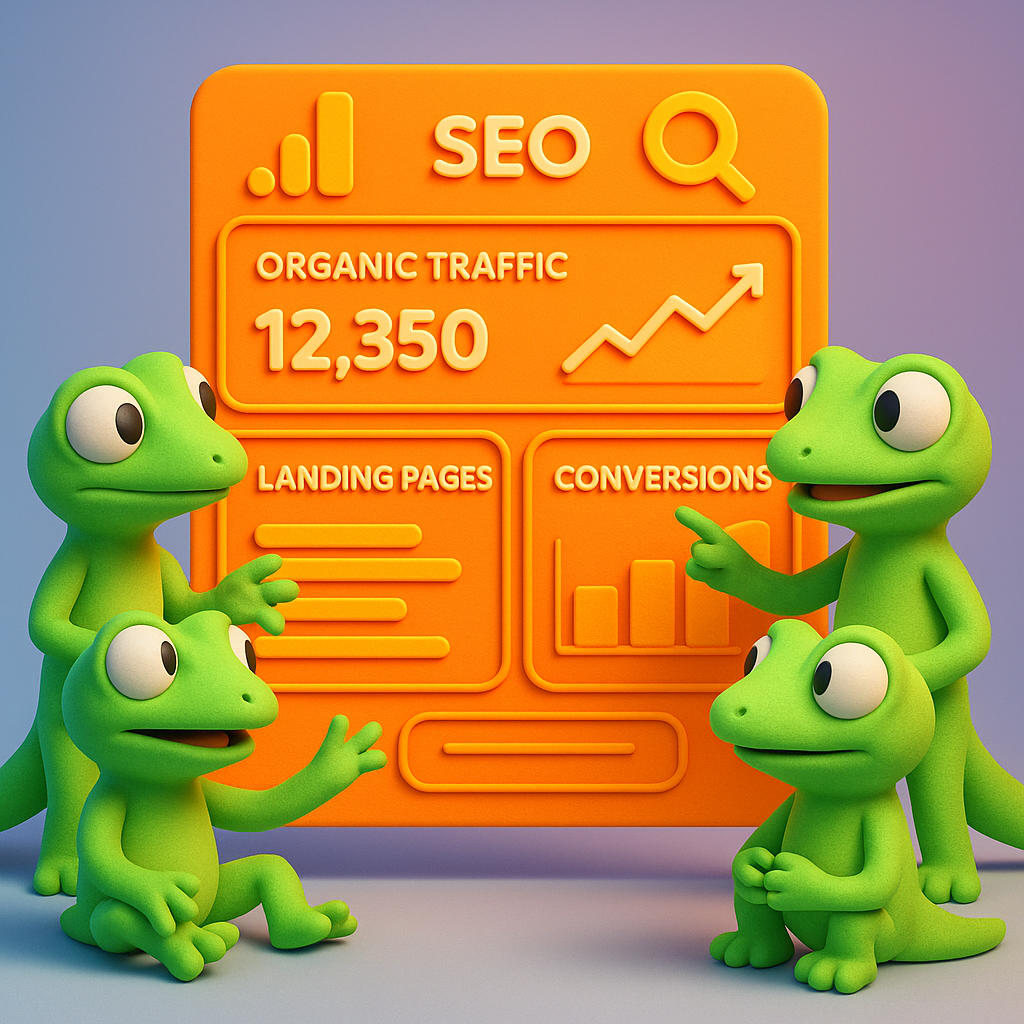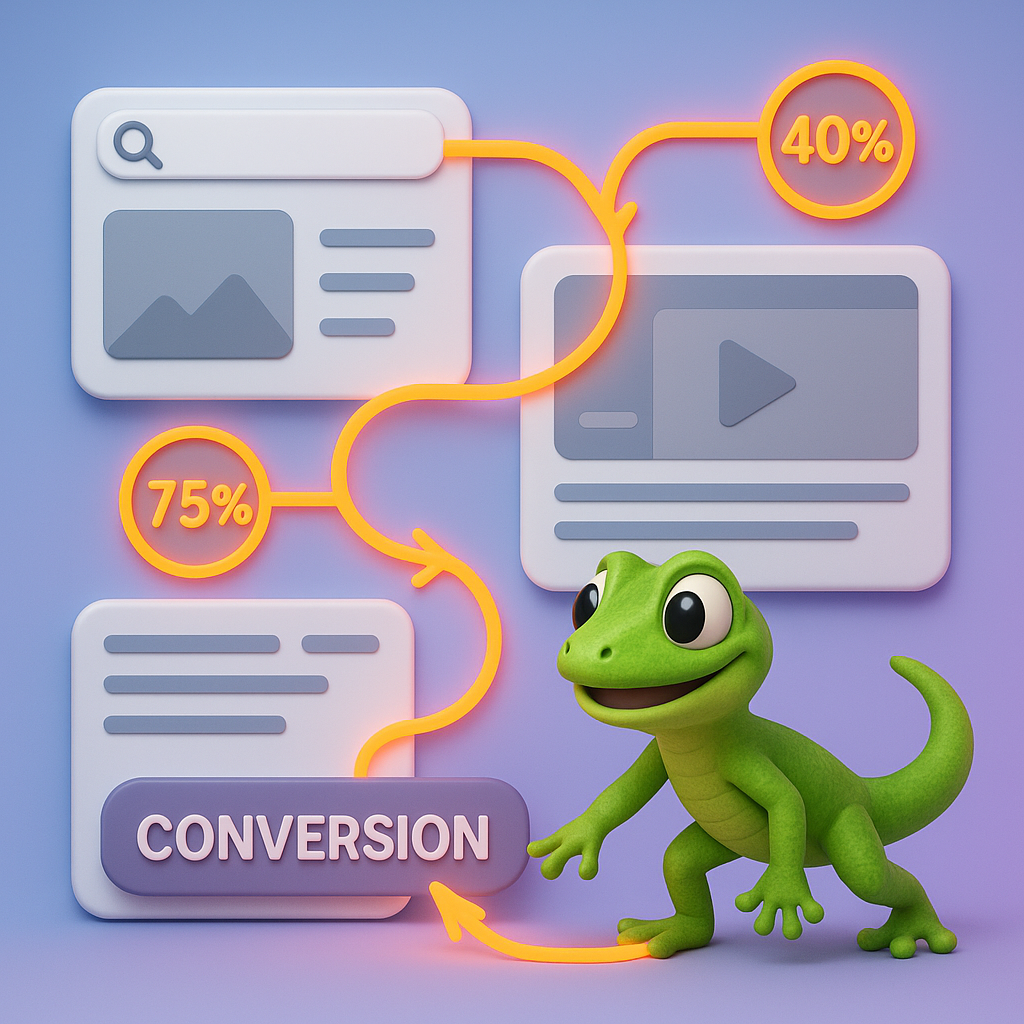SEO Reports Google Analytics Insights for Marketing Leaders
In today’s data-driven marketing landscape, understanding how your SEO efforts translate into tangible results is critical for strategic decision-making. Google Analytics provides powerful tools for monitoring and analyzing SEO performance, but many marketing leaders struggle to create meaningful reports that connect SEO metrics to business outcomes. This guide will help you extract actionable insights from your analytics data to drive organic growth.
Creating Effective SEO Reports in Google Analytics
Setting Up Google Analytics for SEO Tracking
Before diving into reporting, ensure your Google Analytics 4 (GA4) implementation is properly configured:
- Enable enhanced measurement events to capture user interactions automatically
- Connect Google Search Console for comprehensive keyword data
- Set up custom events to track SEO-specific actions
- Configure proper UTM governance to accurately attribute traffic sources
“The foundation of meaningful SEO analytics is proper GA4 configuration, which alone can improve data accuracy by up to 30%,” according to AgencyAnalytics research.
Without this foundational setup, you risk making decisions based on incomplete or inaccurate data—like a captain navigating with a broken compass.

Essential SEO Metrics to Track
Focus on metrics that demonstrate real business impact rather than vanity metrics:
Traffic Metrics:
- Organic sessions and users
- New vs. returning visitors from organic search
- Landing page performance
Engagement Metrics:
- Average engagement time (GA4’s evolved bounce rate)
- Scroll depth
- Page views per session
Conversion Metrics:
- Organic conversion rate
- Goal completions from organic traffic
- Revenue attributed to organic search
For more comprehensive keyword tracking beyond what GA4 offers, consider using a specialized unlimited keyword rank tracking tool that can monitor thousands of terms simultaneously.
Building Custom SEO Reports in GA4
GA4’s reporting interface differs significantly from Universal Analytics. Here’s how to create effective SEO reports:
1. Organic Traffic Analysis Report
Create a custom report focusing on:
- Traffic source/medium breakdown
- Landing page performance
- Geographic and device segmentation
This report helps identify which organic channels and content are driving the most valuable traffic. For example, you might discover that mobile visitors from organic search spend 40% less time on your site than desktop users—signaling a potential UX issue worth addressing.
2. Content Performance Report
Develop a report that tracks:
- Top-performing organic landing pages
- Engagement metrics by page
- Conversion paths from organic content
“Well-crafted meta descriptions can improve CTR by 20-30%,” according to ContentGecko research, making this data crucial for optimizing page performance. By analyzing which pages not only attract traffic but actually convert visitors, you can prioritize your content optimization efforts more effectively.
3. User Journey Report
Map the complete path from organic search to conversion:
- Entry points from search
- Progression through site
- Conversion points and exit pages
This report helps identify both strengths and weaknesses in your organic search funnel. Think of it as following digital breadcrumbs left by your visitors—revealing where they get lost or distracted before converting.

Integrating Google Search Console with GA4
Connecting Google Analytics SEO reporting with Search Console data provides a more comprehensive view:
- Link your Search Console and GA4 properties
- Create reports that combine:
- Impressions, clicks, and positions from Search Console
- Engagement and conversion data from GA4
This integration reveals how rankings translate into actual traffic and business value—a critical insight for marketing leaders. For instance, you might discover keywords ranking in positions 4-10 that drive disproportionately high conversion rates, making them prime targets for optimization efforts.
Advanced SEO Reporting Techniques
Using GA4’s AI-Powered Insights
GA4’s anomaly detection and predictive metrics can:
- Alert you to unexpected traffic changes
- Forecast potential organic traffic trends
- Identify opportunities for optimization
These AI capabilities function like an always-on analyst, spotting patterns and anomalies that might otherwise go unnoticed in the vast sea of analytics data.
Creating Custom SEO Dashboards
For executive-level reporting, build dashboards with:
- Executive Summary: High-level organic trends and conversions
- Content Performance: Top pages and engagement metrics
- Keyword Opportunities: Terms driving traffic with conversion potential
- Technical SEO Monitoring: Site speed, mobile usability metrics
Consider using Data Studio SEO report templates for more customizable visualizations that can be shared across your organization. These dashboards serve as your SEO command center, providing at-a-glance understanding of performance without wading through complex reports.
Automating Reports and Alerts
Save time and ensure consistency by:
- Setting up scheduled email reports for stakeholders
- Creating custom alerts for significant changes in organic traffic
- Automating regular data exports for deeper analysis
Automation not only saves time but ensures consistent monitoring—like having sentinels watching your SEO performance 24/7, ready to alert you when attention is needed.
Measuring SEO ROI Through Analytics
Connect your SEO efforts directly to business results by:
- Implementing multi-touch attribution to understand organic search’s role in the conversion path
- Using CPC equivalency calculations to demonstrate the value of organic traffic
- Analyzing lifetime value of organic visitors compared to other channels
The SEO ROI calculator can help quantify these metrics and justify your SEO investments to leadership. This approach transforms SEO from a mysterious marketing activity into a measurable business asset with clear financial impact.
Common Pitfalls in SEO Analytics Reporting
Avoid these common mistakes:
- Over-relying on pageviews without considering engagement or conversions
- Neglecting mobile segmentation despite its growing importance
- Using static timeframes instead of comparative analysis
- Misattributing conversions due to improper tracking setup
- Ignoring competitive benchmarks that provide context
Cross-validation with multiple data sources is essential, as research from Toptal shows that relying solely on GA4 data can lead to incomplete analysis—supplement GA4 data with specialized SEO reporting solutions for accuracy.
Optimizing Based on Analytics Insights
Turn data into action by:
Content Refinement
Identify underperforming pages using engagement and conversion metrics, then improve them through:
- Content updates based on search intent
- Enhancing metadata for better CTR
- Improving internal linking structure
For example, if analytics reveals a high-traffic page with poor engagement, you might conduct a content audit to better align with user intent or break up text-heavy sections with visual elements. For automated content optimization, website content generator tools can help scale your efforts while maintaining quality.
Technical SEO Improvements
Use GA4 insights to prioritize technical fixes:
- Page speed optimizations for pages with high exit rates
- Mobile usability issues identified through device segmentation
- Site architecture improvements based on user flow reports
Regular website audit reports can help identify technical issues before they impact performance. Think of this as preventative maintenance for your website—addressing small issues before they become traffic-killing problems.
Future-Proofing Your SEO Analytics
Prepare for evolving search landscapes by:
- Adopting GA4’s event-based tracking model to navigate a cookieless future
- Leveraging predictive metrics for proactive optimization
- Implementing enhanced user interaction measurements beyond simple pageviews
- Creating custom dimensions for SEO-specific analysis tailored to your business
Track emerging trends like AI content performance, user intent signals beyond keywords, and semantic search analysis using specialized tools and GA4’s flexible data model. As Growbo research indicates, long-tail keyword optimization and intent-based content will continue growing in importance, making advanced analytics capabilities essential.
TL;DR
Effective SEO reporting in Google Analytics requires proper configuration, focus on business-relevant metrics, and integration with other tools like Search Console. Custom reports should link organic search performance to actual business outcomes, while avoiding common pitfalls like vanity metrics or misattribution. By leveraging GA4’s advanced features and supplementing with specialized SEO tools, marketing leaders can create actionable insights that drive continuous organic growth and demonstrate clear ROI from SEO investments.
